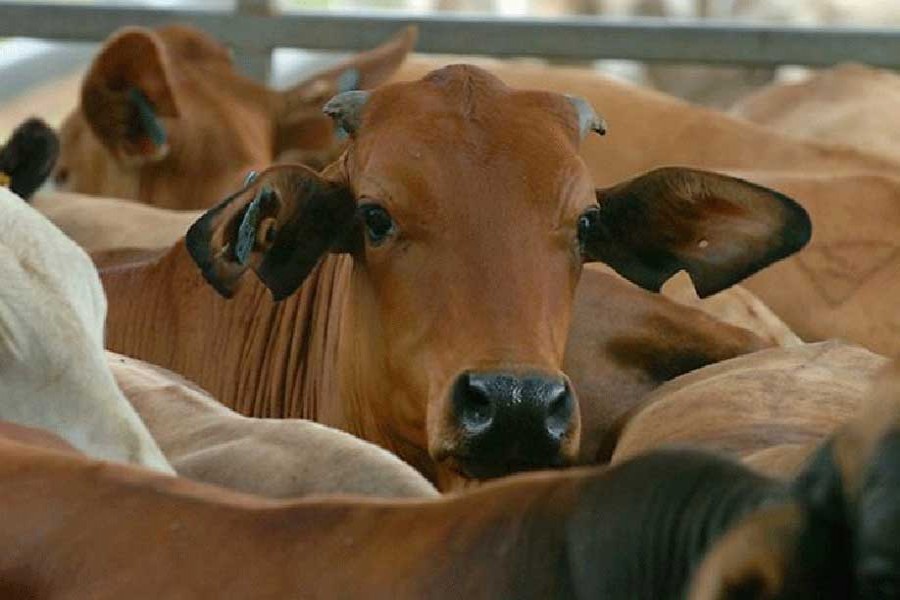Cattle traders in the district are now busy fattening their cattle using harmful steroid in a bid to make quick buck during the Eid-ul-Azha, a festival when Muslims sacrifice millions of cattle across the country.
Although the use of steroids and harmful drugs for fattening cattle was prohibited by the Fisheries and Livestock Act 2010, dishonest cattle farmers are still using them to make their animals attractive to customers and thus make some extra money, reports Reuters.
As farmers often use higher doses of antibiotics and steroids, meat of these animals contains remnants of the chemicals which harms kidney, liver, heart and other organs of consumers, according to experts.
Officials at the Department of Livestock Services, however, claimed that farm owners received training from the department and are bringing up their cattle maintaining the healthy and normal process without using harmful chemicals.
They said several hundred cattle farms were set up in the district to supply sacrificial animals to different parts of the country. Some unemployed people chose to get involved in the business to earn money and support their families while some others are there out of their natural interest.
This year, some 78,686 animals including cattle, goats and buffalos are ready for the Eid-ul-Azha in seven upazilas of the district, according to the Department of Livestock Services.
Following the high demand of 'shankar' breed and country breed cows, the farmers are nurturing such varieties of cattle in their farms for around a year.
Officials at the department said farmers have prepared some 3,692 animals in Sadar upazila, 9,607 in Kalaroa, 13,439 in Tala, 1975 in Ashashuni, 1467 in Debhata, 4310 in Kaliganj, 4975 in Shyamnagar upazilas of the district. Of those, cows account for 39,198, while goats 25,227 and sheep 5501.
Due to the rise in the meat price, people tend to start growing cattle by making small farms and most people in the district rear cattle in their houses, too.
As per official statistics, there are some 10,552 cattle farmers, but unofficial sources claim that the actual number will be much higher.
Rabiul Islam, a farm owner of Nalta village in Tala upazila, said he had nurtured 12 cows last year and made good money by selling those. "This year, I've 15 cows in my shed and expecting a better profit," he said.
Abdus Samad, another farmer of the village, said, "I've kept six cows ready for sale. I usually feed oilcake and other fodder items. Although the price of fodder is higher than the previous year, I maintain those."
Ranjit Kumar Mandal, an official at Kaliganj Agricultural office, said some 76 per cent demand of protein in the country is met from animal resources. "Cattle nurtured here can meet the demand of the district," he added.
He also said if the government takes necessary steps to check the entrance of Indian cattle, the farmers of the district will be benefited by selling their own cattle during Eid.
Samaresh Chandra Das, an official of Satkhira DLS, said the farmers are given necessary advice how to bring up their animals in addition to providing medicines.

- Sunday, 17 November 2024 |
- Today's FE |
- e-Paper |
- Beta Website

